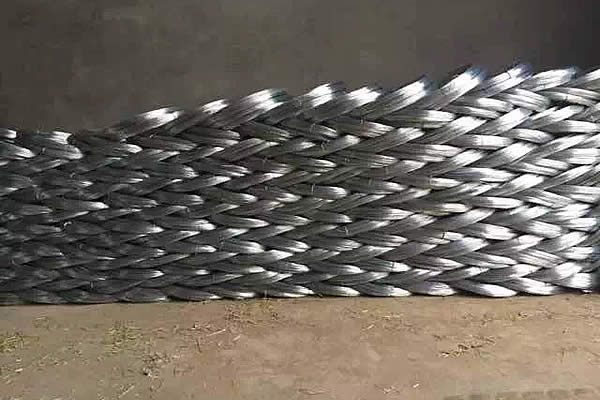 TEL:
+86-13102802206
TEL:
+86-13102802206
 Email:
fencenetting@china.com
Email:
fencenetting@china.com
 Language
Language
 TEL:
+86-13102802206
TEL:
+86-13102802206
 Email:
fencenetting@china.com
Email:
fencenetting@china.com
 Language
Language


Understanding Stainless Steel 1.2085 Cable Properties, Applications, and Benefits
Stainless steel has long been admired for its strength, durability, and resistance to corrosion. Within the spectrum of stainless steel alloys, the 1.2085 stainless steel cable stands out due to its unique properties and versatility. This article explores the characteristics, applications, and benefits of 1.2085 stainless steel cable, highlighting its significance in various industries.
Properties of 1.2085 Stainless Steel Cable
Stainless steel 1.2085, often referred to as the high-carbon stainless steel wire, combines the benefits of both carbon steel and stainless steel. Its chemical composition typically includes high carbon content, chromium, and nickel, which contribute to its hardness, strength, and resistance to rust.
One of the key characteristics of 1.2085 stainless steel cable is its excellent tensile strength. This makes it suitable for applications requiring high load-bearing capacity. Moreover, its high resistance to oxidation and corrosion ensures longevity in harsh environments, making it ideal for outdoor use and in marine applications.
Furthermore, 1.2085 stainless steel is known for its improved wear resistance compared to lower carbon stainless steels. This property enhances its performance in high-friction applications where wear and tear are concerns.
Applications of 1.2085 Stainless Steel Cable
The versatility of 1.2085 stainless steel cable makes it a popular choice across various industries. Some of the primary applications include
1. Construction and Engineering 1.2085 cables are used in scaffolding systems, rigging, and structural reinforcements due to their strength and ability to withstand heavy loads. Their robustness is critical in ensuring safety and durability in construction sites.
2. Marine Industry Given its excellent corrosion resistance, 1.2085 stainless steel cable is widely utilized in marine environments. It is ideal for mooring ropes, anchor lines, and other applications where exposure to saltwater is a concern.

3. Mining In the mining sector, 1.2085 stainless steel cables are employed for hoisting and haulage systems. Their strength supports the heavy lifting required in this industry, ensuring operational efficiency and safety.
4. Transportation The automotive and aerospace industries benefit from using 1.2085 stainless steel cables in various components, from safety harnesses to structural cables in aircraft. Their durability ensures reliable performance in demanding conditions.
5. Agriculture Various agricultural implements and equipment utilize 1.2085 stainless steel cables for their strength and resistance to rust. This is particularly important in equipment that is regularly exposed to moisture.
Benefits of Using 1
.2085 Stainless Steel CableOpting for 1.2085 stainless steel cable over other materials comes with numerous advantages
- Durability The combination of high tensile strength and resistance to corrosion ensures that 1.2085 cables have a long lifespan, even in challenging environments.
- Low Maintenance Unlike other materials that may require regular upkeep or replacement, 1.2085 stainless steel cables are virtually maintenance-free, reducing long-term costs.
- Safety With their strong load-bearing capacity and reliability, 1.2085 cables enhance safety in various applications, minimizing the risk of failure.
- Environmental Resistance The ability to withstand extreme weather conditions, moisture, and various chemicals makes 1.2085 stainless steel cables ideal for outdoor and industrial use.
In conclusion, stainless steel 1.2085 cable is an exceptional choice for a wide range of applications due to its strength, durability, and resistance to corrosion. Its unique properties make it indispensable in various industries, from construction to marine and transportation. As technology and engineering challenges evolve, the demand for reliable materials like 1.2085 stainless steel will continue to grow, making it a cornerstone in many applications requiring strength and resilience.